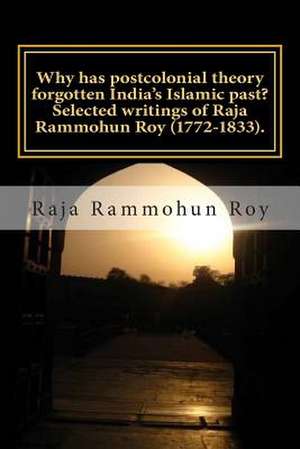Why Has Postcolonial Theory Forgotten India's Islamic Past? Selected Writings of Raja Rammohun Roy (1772-1833).
en Limba Engleză Paperback
Preț: 39.07 lei
Nou
Puncte Express: 59
Preț estimativ în valută:
7.48€ • 8.13$ • 6.29£
7.48€ • 8.13$ • 6.29£
Disponibil
Livrare economică 31 martie-14 aprilie
Preluare comenzi: 021 569.72.76
Specificații
ISBN-13: 9789384281106
ISBN-10: 9384281107
Pagini: 48
Dimensiuni: 152 x 229 x 3 mm
Greutate: 0.08 kg
Editura: Lies and Big Feet
ISBN-10: 9384281107
Pagini: 48
Dimensiuni: 152 x 229 x 3 mm
Greutate: 0.08 kg
Editura: Lies and Big Feet












